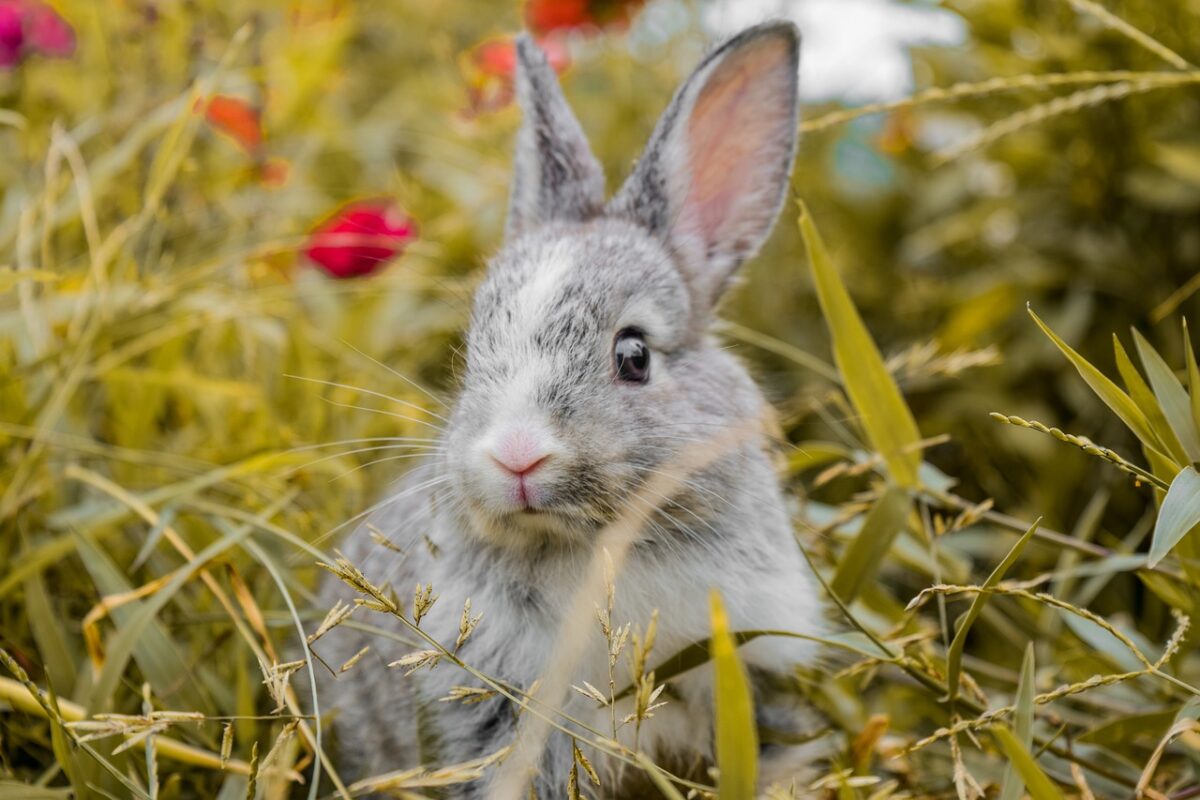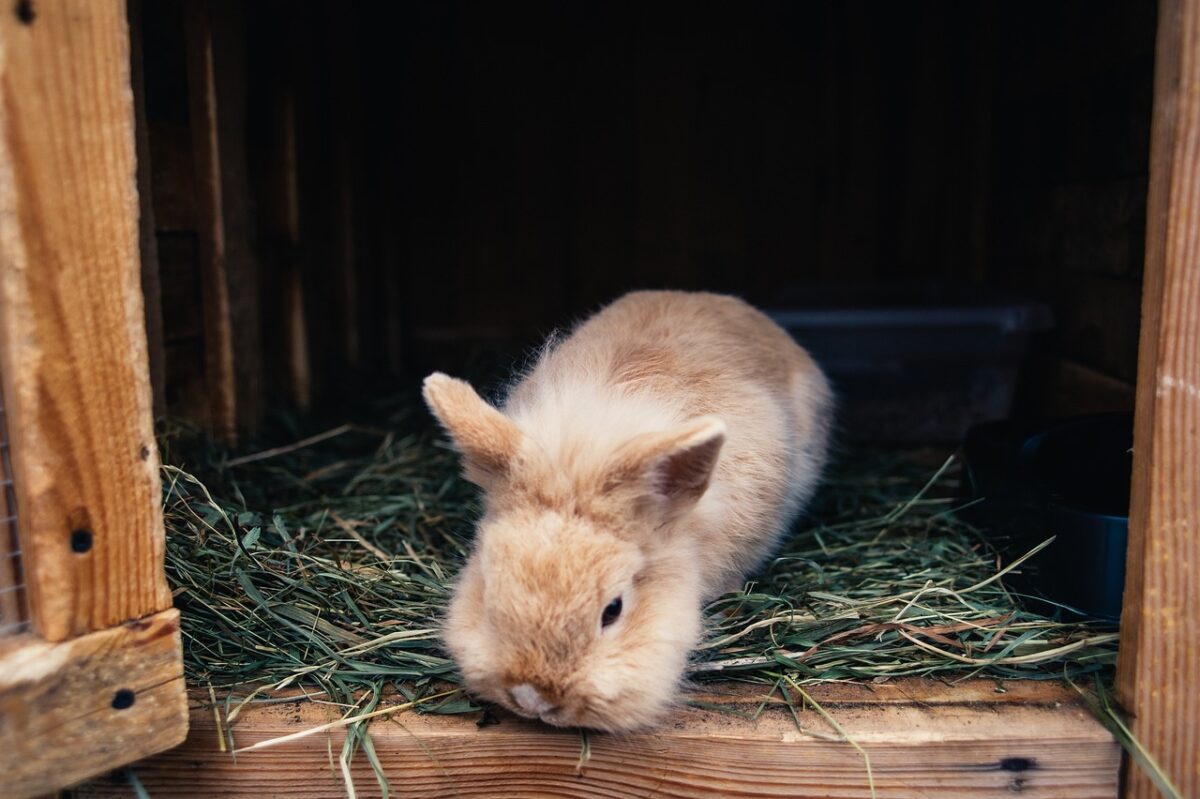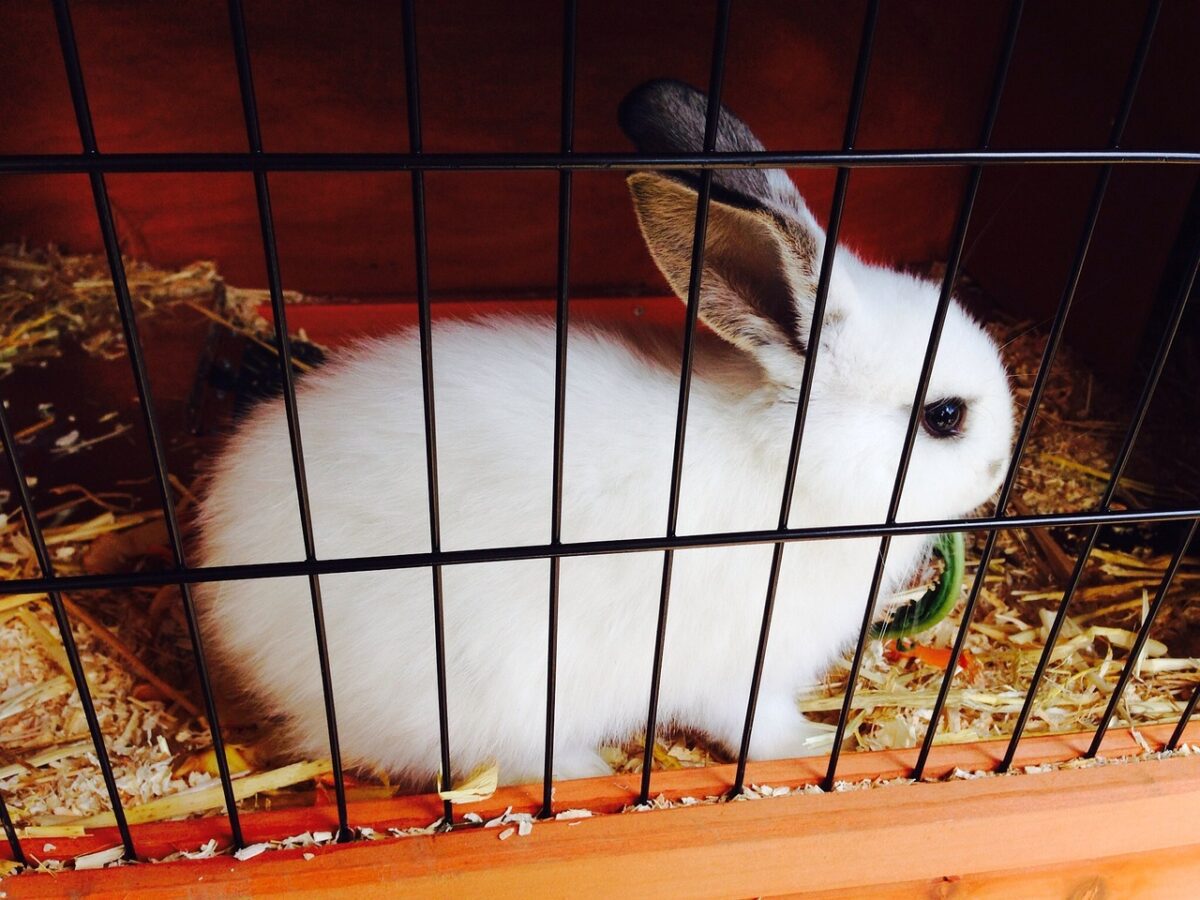When setting up a home for your pet rabbit, one of the most debated topics among rabbit owners is whether wire flooring is appropriate for rabbit cages. This comprehensive guide will examine the advantages and disadvantages of wire flooring, explore alternatives, and provide evidence-based recommendations for the safest flooring options for your furry friend. Our goal is to give you a well-rounded understanding, so you can make the most informed decision about your rabbit’s habitat, balancing their comfort with practical care requirements.
Table of Contents
Understanding Wire Flooring in Rabbit Cages
Wire flooring consists of metal mesh or grid material that creates an elevated surface in rabbit cages. This type of flooring is often found in commercial breeding operations due to its practical benefits for hygiene and maintenance. However, as awareness of rabbit welfare grows, pet owners and veterinarians are increasingly questioning whether wire flooring is suitable for rabbits kept as pets.
The Great Debate- Safety Concerns vs Practical Benefits
The debate over wire flooring centers on two key aspects:
- Animal Welfare and Comfort: Does wire flooring compromise rabbit health and comfort?
- Practical Maintenance and Hygiene: Are there tangible maintenance benefits that justify using wire flooring?

Let’s examine each side in detail, starting with the potential benefits of wire flooring.
Pros of Wire Flooring
- Hygiene Management
- Droppings and Urine Fall Through the Wire Mesh: Wire flooring allows waste to fall through, reducing direct contact between the rabbit and its waste.
- Easier Cleaning and Maintenance: Cleaning wire floors can be more straightforward since waste can be collected in a tray below.
- Better Ventilation: Wire flooring promotes airflow, which can help prevent odor buildup and maintain a fresher environment.
- Lower Risk of Bacterial Growth: With reduced exposure to droppings, there is less chance of bacterial growth within the cage.
- Practical Benefits
- Cost-Effective Solution: Wire flooring materials are often cheaper than other cage base options, making it a budget-friendly choice for many pet owners.
- Durable and Long-Lasting: Wire floors are typically made of metal, which withstands wear and tear well.
- Reduces Odor Buildup: By keeping waste separate from the main living area, wire flooring can contribute to a less odorous environment.
- Time-Efficient Maintenance: For owners with limited time, wire flooring offers an easy and quick cleaning solution.
- Disease Prevention
- Minimizes Contact with Feces: Reduced contact with waste lowers the risk of disease transmission, especially diseases such as coccidiosis.
- Better Air Circulation: Improved airflow reduces humidity levels and may contribute to a healthier environment for your rabbit.
Cons of Wire Flooring
Despite these practical benefits, wire flooring is not without its downsides. In fact, for many pet owners, the disadvantages far outweigh the advantages.
- Health Risks
- Potential for Sore Hocks (Pododermatitis): Wire flooring can place pressure on rabbits’ feet, leading to painful sores known as sore hocks, especially in heavier breeds.
- Risk of Foot Injuries: Rabbits can get their feet caught in the mesh, potentially causing sprains or fractures.
- Possible Spine Problems: The constant strain on their posture and joints from standing on wire can affect a rabbit’s spine.
- Stress on Joints: Wire floors lack adequate cushioning, putting stress on the rabbit’s joints and contributing to long-term health issues.
- Comfort Issues
- Uncomfortable Resting Surface: Wire flooring is inherently uncomfortable, offering no softness or support for rabbits to rest on.
- Limited Natural Behaviors: Rabbits on wire floors cannot dig, burrow, or engage in other natural behaviors that solid surfaces can accommodate.
- Increased Stress Levels: Rabbits on uncomfortable surfaces may exhibit signs of stress, such as restlessness or aggression.
- Restricted Movement: Wire floors can limit the freedom of movement and may cause rabbits to be more sedentary.
- Poor Traction: The lack of solid footing can make it challenging for rabbits to move naturally.
- Psychological Impact
- Prevents Natural Digging Behavior: Digging is a fundamental behavior for rabbits, and wire flooring makes it impossible.
- May Cause Anxiety: Without a comfortable and secure surface, some rabbits may become anxious and show signs of distress.
- Reduced Environmental Enrichment: Wire flooring limits the ways in which a rabbit can interact with its environment, which can affect its mental health.
- Limited Expression of Natural Instincts: Rabbits thrive in environments that mimic their natural habitat; wire flooring restricts this expression.
Comparative Analysis Table: Wire vs. Solid Flooring
| Aspect | Wire Flooring | Solid Flooring |
|---|---|---|
| Hygiene | High | Moderate |
| Comfort | Low | High |
| Maintenance | Easy | More demanding |
| Health Risks | Moderate-High | Low |
| Natural Behavior | Limited | Supported |
| Cost | Low | Moderate-High |
| Durability | High | Varies |
Scientific Evidence and Research
Studies published in the Journal of Applied Animal Welfare Science indicate that rabbits housed on wire flooring exhibit a higher incidence of pododermatitis compared to those on solid surfaces. For example, a study involving 100 rabbits over a six-month period reported the following findings:
- 45% developed minor foot problems on wire flooring.
- 15% developed severe pododermatitis.
- 5% required veterinary intervention.
- Less than 10% of rabbits on solid flooring experienced similar issues.
These findings underscore the potential risks associated with wire flooring and support the need for alternative flooring options for pet rabbits.
Safe Alternatives to Wire Flooring
If you’re looking for alternatives to wire flooring, here are several options that prioritize both comfort and hygiene for your rabbit:
- Solid Plastic Flooring
- Smooth, Non-Porous Surface: Easy to clean and maintain, solid plastic flooring is a great choice for rabbit cages.
- Comfortable for Rabbits: Solid plastic surfaces provide a stable, comfortable footing.
- Affordable Option: Plastic flooring is relatively inexpensive and widely available.
- Natural Wood Flooring
- Environmental Enrichment: Wood allows rabbits to dig and burrow, fulfilling their natural instincts.
- Comfortable Surface: Wood is gentle on paws, making it a comfortable choice.
- Natural Feel: Wood provides a more natural environment, which can improve rabbit well-being.
- May Require More Maintenance: Wood is prone to absorb odors and may need regular cleaning and treatment.
- Rubber Mat Solutions
- Excellent Cushioning: Rubber mats provide a soft surface that is ideal for rabbits prone to foot problems.
- Good Traction: Rubber surfaces prevent slips and allow rabbits to move freely.
- Easy to Clean: Rubber mats are durable and simple to maintain.
- Temperature Regulation: Rubber materials can help regulate temperature, keeping your rabbit comfortable.
- Combination Approaches
- Partial Wire with Solid Resting Areas: Combining wire and solid flooring can offer the best of both worlds, with wire for hygiene and solid areas for comfort.
- Customizable Setup: This approach allows for flexible design, adapting to the specific needs of your rabbit.
Expert Recommendations
Leading rabbit welfare organizations, including the House Rabbit Society, generally advise against full wire flooring. Their recommendations include:

- Avoiding Full Wire Flooring: Opt for solid surfaces whenever possible.
- Providing Solid Resting Areas: If wire is used, provide resting mats or solid areas for the rabbit.
- Using Appropriate Bedding Materials: Add bedding to increase comfort and reduce stress.
- Regular Floor Maintenance: Clean the cage regularly to prevent odor and bacteria buildup.
- Monitoring Foot Health: Routinely check for signs of pododermatitis and other foot issues.
Implementation Guidelines
If you currently use wire flooring in your rabbit’s cage, consider these steps to improve their living conditions:
Immediate Actions
- Add Resting Mats: Place soft mats on sections of the wire flooring to provide a resting area.
- Install Solid Platforms: Create solid surfaces within the cage for your rabbit to relax on.
- Provide Thick Bedding: Use bedding on top of wire floors to cushion your rabbit’s feet.
- Monitor Foot Health: Regularly check your rabbit’s paws for sores or signs of discomfort.
Long-Term Solutions
- Plan Cage Modifications: Consider switching to a solid-floor cage or adding modular elements.
- Research Alternative Materials: Explore options like rubber mats, plastic flooring, or a combination of both.
- Consult with Veterinarians: Seek advice on maintaining a safe and comfortable environment for your rabbit.
- Join Rabbit Owner Communities: Connect with other owners for ideas and advice on cage modifications.
Cost Comparison
Here’s a breakdown of the average costs for wire and solid flooring setups:
Wire Flooring Setup:
- Initial Cost: $20-30
- Replacement Every 2-3 Years
- Additional Resting Mats: $15-25
- Total Annual Cost: ~$25
Solid Flooring Setup:
- Initial Cost: $40-60
- Annual Maintenance: $30-40
- Bedding Materials: $100-150
- Total Annual Cost: ~$175
Personal Experiences and Case Studies
- Sarah Thompson, Rabbit Owner (5 years): “After switching from wire to solid flooring with proper bedding, my rabbit’s behavior completely changed. She became more active and showed fewer signs of stress.”
- Dr. James Miller, Exotic Vet: “In my practice, I’ve seen a significant decrease in foot-related issues when owners transition to appropriate solid flooring options.”
Best Practices for Safe Flooring
Creating a safe and comfortable environment for your rabbit involves more than just choosing the right type of flooring. Regular maintenance, health monitoring, and environmental enrichment are all essential aspects of responsible rabbit care. Here are some best practices for ensuring your rabbit’s flooring remains safe and supportive:
1. Regular Maintenance
- Daily Spot Cleaning: Remove any waste, food scraps, and soiled bedding on a daily basis to keep the cage clean and odor-free.
- Weekly Deep Cleaning: At least once a week, thoroughly clean the entire cage, including all surfaces and accessories.
- Monthly Sanitization: Use pet-safe sanitizers monthly to disinfect the cage, especially if you use a combination of wire and solid flooring.
- Regular Inspection: Routinely inspect the flooring for any signs of wear and tear, such as rust on wire floors or splinters in wood.
- Prompt Repairs: Address any damage immediately to prevent injury to your rabbit. For example, replace worn-out rubber mats or fix loose wire sections.
2. Health Monitoring
- Daily Foot Checks: Regularly examine your rabbit’s feet for any signs of redness, sores, or inflammation, especially if they are on wire flooring.
- Behavior Observation: Watch for any signs of discomfort or reluctance to move, which could indicate pain or stress related to flooring.
- Weight Monitoring: Overweight rabbits are more susceptible to foot problems on wire floors, so keeping your rabbit at a healthy weight can help prevent injuries.
- Activity Levels: Ensure your rabbit is getting enough exercise, as sedentary rabbits are more likely to develop health issues.
- General Wellness: Monitor your rabbit’s overall health, looking out for any behavioral changes, as these may be signs of discomfort or illness.
3. Environmental Enrichment
- Multiple Surfaces: Provide a variety of surfaces within the cage, such as solid resting areas, soft mats, and digging areas, to create a stimulating environment.
- Digging Areas: Rabbits love to dig, so consider creating a small digging area within the cage using a shallow box filled with hay or paper-based bedding.
- Hiding Spots: Rabbits feel safer when they have a place to hide. You can add small hideouts or boxes within the cage for them to retreat to.
- Exercise Space: Ensure your rabbit has enough space to hop around and explore. This is especially important if they are housed on solid flooring, which allows them to move more naturally.
- Comfortable Resting Areas: Use soft bedding or cushioned mats in resting spots to provide your rabbit with comfort and encourage natural behaviors like stretching and lounging.
Future Considerations for Rabbit Cage Flooring
As rabbit care and welfare standards evolve, new materials and cage designs are emerging that cater specifically to the needs of pet rabbits. Here are some innovative ideas and developments in rabbit flooring that could become widely adopted in the near future:
1. Innovative Materials
- Eco-Friendly Options: Sustainable materials, such as bamboo or recycled rubber, are gaining popularity as eco-conscious pet owners look for environmentally friendly alternatives.
- Advanced Synthetics: Synthetic materials are being developed that combine durability with comfort, providing a resilient yet supportive surface for rabbits.
- Antimicrobial Surfaces: Some flooring materials are treated with antimicrobial agents that help reduce the spread of bacteria and keep the cage cleaner for longer.
- Temperature-Regulating Materials: Flooring materials that help regulate temperature are being introduced, offering added comfort for rabbits, especially in regions with extreme climates.
2. Design Improvements
- Modular Systems: Modular flooring systems allow pet owners to mix and match different flooring types, such as wire and solid surfaces, to customize the cage according to the rabbit’s needs.
- Easy-Clean Solutions: Floorings designed with grooves or channels allow for easier waste collection, making cleaning simpler and more effective.
- Better Ventilation: Designs that prioritize airflow within the cage can help maintain a fresh environment without compromising on comfort.
- Enhanced Comfort: Flooring that includes built-in padding or soft textures can reduce the need for additional bedding while offering the same comfort benefits.
- Improved Safety: Modern flooring solutions focus on reducing sharp edges and potential snag points to create a safer environment for rabbits.
Conclusion
Choosing the right flooring for your rabbit’s cage is an important decision that impacts their health, comfort, and overall well-being. While wire flooring offers practical benefits, the potential risks to rabbit health and welfare often outweigh these advantages. Rabbits kept on wire floors are more prone to foot injuries, discomfort, and behavioral issues, which can negatively impact their quality of life.
Instead, modern alternatives like solid plastic flooring, natural wood, and rubber mats provide a balanced solution that addresses both hygiene and comfort concerns. Many experts, including veterinarians and animal welfare organizations, recommend using solid or cushioned surfaces for rabbits, especially for pet rabbits that may be more sensitive to environmental discomfort than their wild counterparts.
The best approach to rabbit cage flooring often involves:
- Prioritizing Rabbit Comfort and Health: Choose materials that support your rabbit’s physical well-being and allow them to exhibit natural behaviors.
- Implementing Proper Cleaning Routines: Maintaining a clean environment reduces the risk of disease and promotes a comfortable, odor-free habitat.
- Using Appropriate Materials: Select flooring options that provide stability, comfort, and durability.
- Regular Monitoring: Keep an eye on your rabbit’s health and behavior, and make adjustments as needed.
- Adapting to Individual Needs: Every rabbit is unique, and some may have specific requirements based on their age, breed, or health status.
As the rabbit care industry continues to evolve, more humane and innovative flooring options are likely to become available, reflecting our growing understanding of rabbit welfare. The shift towards comfortable, supportive, and naturalistic environments underscores the importance of providing our furry companions with living conditions that enhance their quality of life.
Remember, each rabbit is unique, and what works for one may not work for another. Always observe your pet’s behavior and consult with veterinary professionals when making housing decisions. By choosing flooring solutions that prioritize rabbit welfare, you’re taking an essential step toward ensuring your rabbit lives a happy, healthy, and fulfilling life.

Tara Ragatz is an accomplished writer specializing in rabbit care and housing, holding a Master’s degree in Animal Science. With over 8 years of experience, Tara provides expert advice on creating the perfect living environments for rabbits through her articles on RabbitCage.org. Her extensive knowledge and practical tips help pet owners ensure the best care for their rabbits. For more insights and inspiration, follow her on Pinterest.

